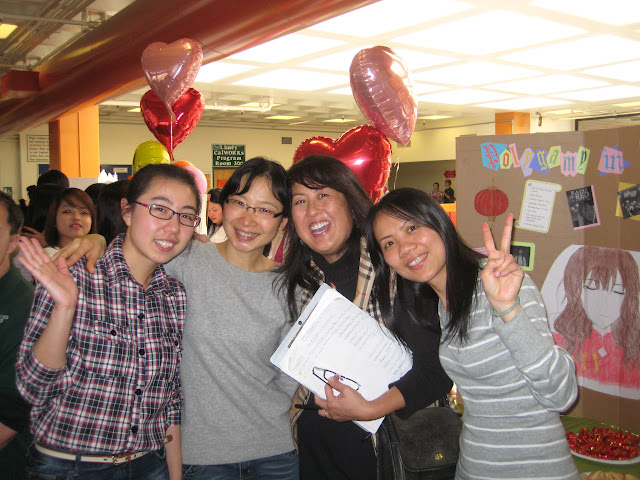Why I Teach History/Herstory Using Multimodal Project Assignments and Multimodal Writing in a Digital Age
My Teaching With Technology Philosophy
In order to be a well rounded, educated, participating citizen in the community today, it is essential to be well grounded in the knowledge of one’s own history/herstory. It has been said that the victors write the history books, so I encourage you to develop a critical eye to the interpretation of historical events and to emphasize the interpretation of history/herstory from multiple perspectives. This semester, we study a large and diverse group, the Asian Pacific Americans, and their contributions to the social, economic, political, and cultural diversity of the United States. During in-class discussions and dialogue, I ask you to examine your stereotypes and perceptions on such topics as:
How do you define American culture?
Why does 'American' usually mean 'white'?
What are the forgotten, little known and perhaps “silenced” or “ignored” histories of communities of people like you and me?
HerStories?
Who are the Asian Pacific Americans?
 |
| Students Present Their Research Projects at the AAAS Faire |
How Do We Uncover The Buried Past As We Decolonize The Digital Archive?
 |
At first glance, I can’t really say that I come to the community college classroom with any clear conscious method or plan, but through thirty years of teaching, I have found a few things that seem to work. If I have any method at all, it would have to be a deep-felt enthusiasm for the subjects I aspire to teach, including the use of technology and multimodal projects that support a participatory culture online (Palmeri, p.114). I can honestly say that there is no other professional activity that I find more enjoyable or rewarding than teaching.
 |
| Click below to see digital and non-digital multimodality at the AAAS Faire |
A mash-up of multiple and mode (Ball, Cheryl E., et al.)
Examples:
A Dissertation is a multimodal text (p.2)
A Performance is a multimodal text (p.2)
A Web Site is a multimodal text (p.2)
A Twitter Feed is a multimodal text (p.7)
A Tabbed Brochure is a multimodal text (p.10)
A Map is a multimodal text (p.16)
A Data Table is a multimodal text (p.17)
A Movie Poster is a multimodal text (p.53)
My Role As A Teacher -- As a woman of color, I have an insight into many diversity issues as a result of direct personal experience that I can apply to my teaching and writing projects to enhance the learning environment inside and outside of the classroom. I employ an Activity-based Multimodal Curriculum to engage students with a clear assessment Rubric and SLOs.
 "What is the role of the student?"
"What is the role of the student?"The Role of the Student As Global Citizen --
Validating multicultural voices through multimodal composition allows active engagement and exchange about how to be a global citizen, but this takes a lot of time. We can’t be lazy.
What Mask Are You Wearing?
There are five multimodal projects:
--Newsletter with Students' Writing about the Masks
--In Class Presentations with Display Boards and Masks (Video)
--Campus Library Display & Invited Speaker (Laney Tower News)
--Peralta Community Colleges Website with 102 Comments
--Announcement to Students, Administration, Staff and Beyond
https://thelaneytower.com/2013/10/24/kamala-harris/
In the best situation, I try to convey two complementary things for the "What Mask Are You Wearing" multimodal project. The first is a fascination and excitement with the scope of the academic subject or scholarly research presented, and the thrill of developing and using new methods for learning more about the past (as well as the present and future projections). The second is the sense of students being my partners in learning, and of doing scholarly or community work alongside me. Everyday, I am a “giver” of encouragement. I learned this second aspect of my teaching from the best of my own university professors, who made me their junior partner in teaching, and encouraged me as a capable intellectual actor ready to tackle the big issues (and to stand confidently in front of a room full of strangers without shaking). In essence, I was supported, helped, coached, encouraged and taught how to learn—all very significant early work experience and critical exposure. And therefore, while I am working with you inside and outside of the classroom, I desire to “give back” to others.
https://drive.google.com/file/d/0B2hlYIVhq74qYW9SclF3WGdTQnZaTmlWaU9yYVlNR0VWSjhR/view?usp=sharing
| Amazon Books |
 |
| Amazon Books |
 |
| Santa Fe Japanese American Prison Camp (Courtesy U.S. Justice Department) |
In our class together this term, I hope to get to know each of you, and that we will respect one another. Respect in the classroom also includes respecting opinions with which you may disagree. I request that we agree to some guidelines to support and help each other learn: 1) Respect yourself and others; 2) Step up, step back: If you like to talk, try to “step back” to give others a chance to participate. If you’re a quiet person, try to “step up” and contribute more; 3) Try it on: You may hear a perspective that you do not agree with. “Try it on” from their perspective first; and 4) Speak for yourself, not for others: Try “I think” or “I feel” or “I believe” or “in my experience” instead of “women think” or “white people think.”
I am delighted to be your instructor this semester, and I am hopeful that we will have a productive, successful and engaging class together. Do let me know if I can assist you in any way. Please email me.
| ||
"Bridges"
Works Cited
Ball, Cheryl E., et al. Writer/Designer: a Guide to Making Multimodal Projects. Bedford/St. Martins, 2018.
Lee, Erika. The Making Asian America: A History. Simon Schuster, 2017.
Palmeri, Jason. Remixing Composition: a History of Multimodal Writing Pedagogy. Southern Illinois University Press, 2012.
Takaki, Ronald. Strangers From a Different Shore. Penguin, 1998.





No comments:
Post a Comment